by Barbara Gruener
Connection. The act of engaging relationally, of belonging, of finding things that ground us. Connecting is such a strong human need that sometimes we even extend our reach super far, like when I hear that you’re from Alfred, New York, so I mention that I used to room with a girl from there, on the chance that she’d be the link we’re looking for as we work to find something in common. Has that ever happened to you? Connection. We’re built for it, but it can be challenging even in the best of times. Right now, in the midst of a global pandemic, when life is really tough and we are enduring the loneliness of physical distancing and social isolation, our need for connection can be even more pronounced and profound. Connection matters.
But how do we create caring connections? Consider these 5 strategies:
Check in. A strong way to get connected is to check in with one another. There is so much power in asking that one little question: How are you doing today? Whether we’re checking in with an entire group, like a class family, or with an individual, like a sibling, a friend, or a co-worked, carving out time to get an emotional barometer reading will do wonders to foster and strengthen our connections and relationships.
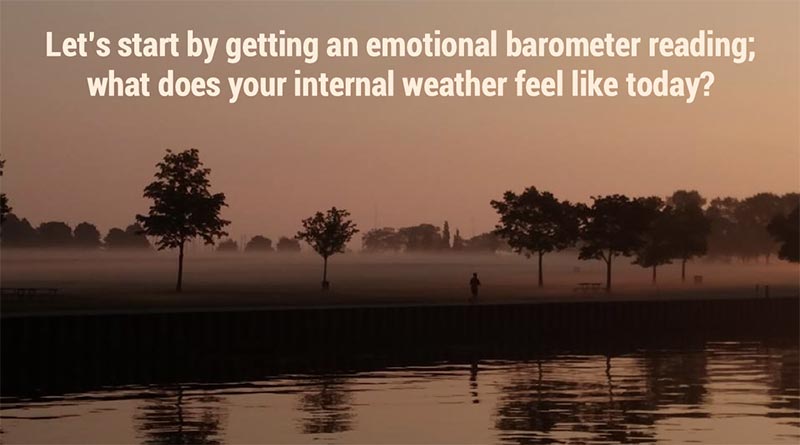
Consider the myriad ways to do a check-in: In person, by text or email, over the phone, even on a Zoom call. In a larger group, we might ask the people in our presence, whether virtual or in person, for their emotional weather report. Expect answers like sunny with a high of 75, a storm brewing, or partly cloudy with a promise of sunshine. Whatever their weather report, inviting them to share with the group before proceeding with the day’s activities is important; finding someone who’s going through the same weather as we are is a surefire catalyst for connection. If someone’s weather isn’t something that they’d like to share publicly, give them permission to share privately how they’re doing.
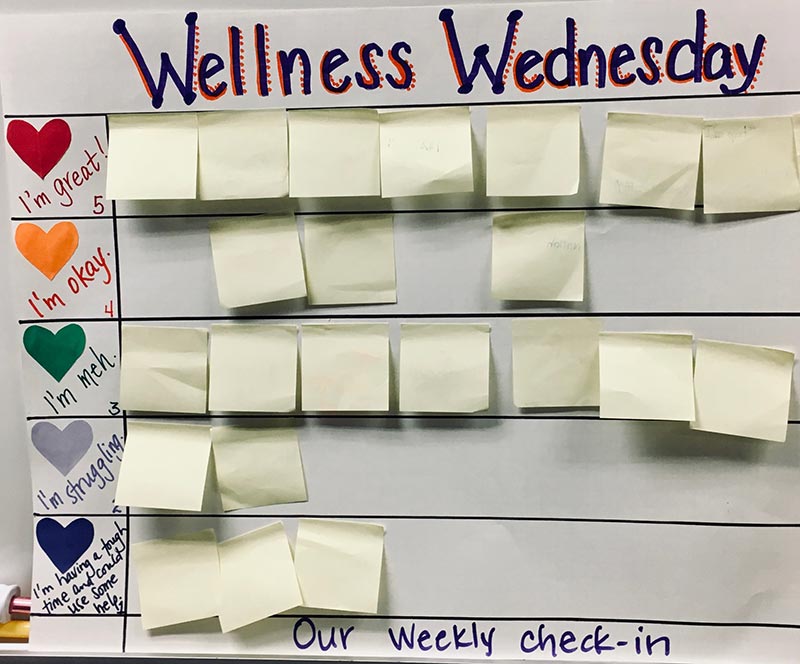
If class is meeting in person, consider making a wellness check-in chart; here’s one that we used effectively with a fifth-grade class last school year. What began as an anonymous check-in with names on the backside of the sticky notes morphed into an interactive opportunity to connect more deeply with one another when a student asked if the class could put their names on the front if they wanted to, to practice the courage and the vulnerability of sharing how they’re doing with one another. It also served as an opportunity for those checking in and doing well at a four or five to intentionally check on those who were not quite there that day. Giving students the permission to move those stickies around throughout the day was an important visual reminder that feelings can change and that all feelings are important and valuable.
Listen Wholeheartedly. Just how do we teach active, reflective, and wholehearted listening? Consider the SOLER method from a Capturing Kids’ Hearts training. In this model, we learn to Square off and face the person whom we are listening to, to Open up our posture so that we don’t have any barriers between us and the person who’s speaking, to Lean in slightly to show engagement and interest in what is being said, to maintain Eye contact (because the eyes can be the window to the soul) while we’re listening, and to Respond with respect.
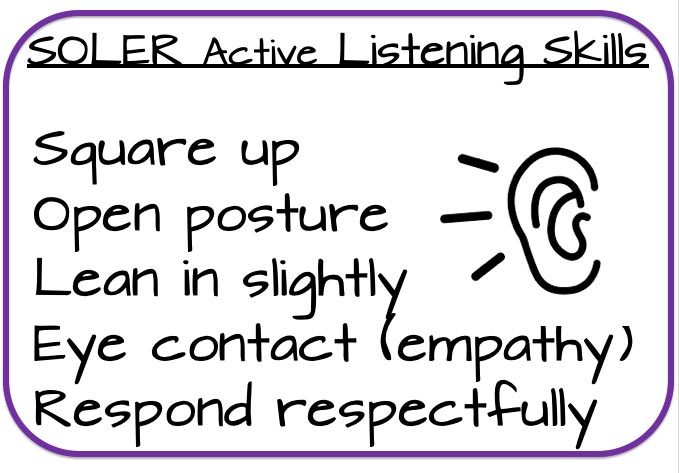
And though the final step is to respond, we always practice listening to understand before responding.
Show empathy. We are hard wired for empathy, but this glorious skill is something that has to be taught and practiced. On purpose. With intention. Then, when we step into someone else’s story, magical things can happen. Psychologists Daniel Goleman and Paul Ekman have explained the three kinds of empathy like this: Cognitive empathy is about working to understand the thoughts and feelings underneath another’s experiences. It’s about perspective-taking. Emotional empathy is about imagining ourselves in a similar situation and embracing someone else’s feelings around that experience. Compassionate empathy creates a beautiful balance between the cognitive (head) and the affective (heart) even as it looks for an opportunity to help (hands), not to fix but rather to comfort, to care, and to help heal.
Head. It’s a mindset.
Heart. It’s a heart-set.
Hands. It’s a skillset.
It’s from this powerful empathy trifecta that we get the strongest, healthiest connections. My empathy hero, Dr. Michele Borba, who authored the brilliant bestseller, UnSelfie, has delineated these 9 Empathy Habits that can we can teach help give our future The Empathy Advantage:
{Insert UnSelfie image}
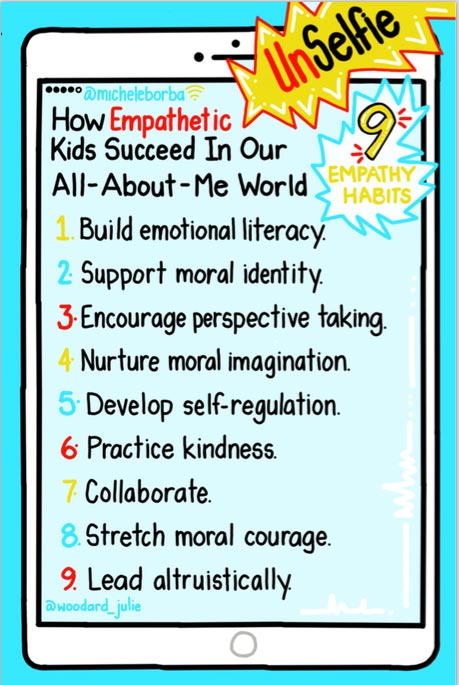
I recommend a book study with that gem. Researcher, professor, and author Brené Brown says that empathy is mostly about the gift of holding space.
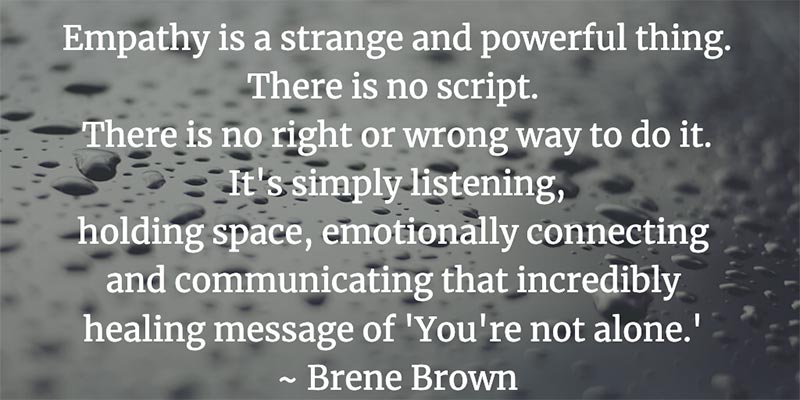
As we listen with intention, empathy statements can help us clarify, validate, and connect: I’m here for you. You’re not alone. I’m listening. Tell me more. That sounds so scary. This must be incredibly challenging. What’s the hardest part? Help me understand. Using prompts like these provides a perfect opportunity to practice asking for more information as we help people process what they’re going through while working to understand what they’re feeling. Only then might we fully realize what they might want or need from us beyond behind heard.
Get involved. Another great way to connect is to get involved in an extracurricular activity by joining an organization, a club, or a team. Some of my favorite childhood memories include my time with my 4-H Club members and my Youth Group friends at church. It is in these gatherings that we get to sharpen our social skills, practice communicating our wants and needs, set goals for ourselves, and navigate through conflict to resolution. During these days of pandemic pause, it may take some creative problem solving to connect until we’re able to gather in person again, but even meeting through a screen can feed our hunger for social interaction with a group or team. I’ve seen music lessons, dance lessons, yoga and more offered online through Zoom and other online platforms.
Spread optimism, gratitude and hope. What we sow, will grow. If we want to be connection catalysts, we need to work at speaking optimism, gratitude, and hope into people. When we seek positivity and joy, guess what we’ll tend to find? Positivity and joy, which doesn’t mean that we won’t have hard things happen. But, when hard things do happen, we will have genuine connections with people that we can lean into the pain with and lean on for assistance and support. Asking for help actually strengthens those connections as it creates a win-win for the giver and the receiver. Then follow that help up with a thank-you text, a hand-written note, a personal phone call, or even some kindness from your kitchen for even more connection.
Connection is to the heart what water is to the body. Encourage people, lift them up, love them unconditionally. Apologize and forgive; give grace generously. Be courteous and compassionate. Confront problems but care-front people. Treat others fairly, with kindness and respect. Celebrate their successes and share their sorrows. Be the spark that ignites the flame of hope when things feel hopeless. Light up for the people in your presence as you invite them to unwrap the present with you. Speak the truth in love and keep on connecting by heart.
